The Charter Revision Commission is charged with reviewing the entire City Charter for ways to make government more transparent and responsive to the needs of city residents, with a particular focus on reforms to help tackle the housing crisis. In the Commission’s work thus far, Commission staff has identified a number of areas where Charter reforms may be appropriate: housing and land use; elections; climate resilience and infrastructure; procurement and payments; and modernization of the City Map.
Housing • Elections • Procurement • Climate • City Map
Letter from the Executive Director
Chair Buery and Commissioners:
New York is practically a religion. We are told, from the moment we understand that there is a New York, that it is the greatest city in the world. And why shouldn’t it be? Every day, when we get a glimpse of our skyline, or see the Statue of Liberty in our harbor, our belief in the greatness of the city is reaffirmed.
In truth, much of what makes New York great is an inheritance. At the turn of the 20th century, New York made itself anew. In a few short decades, New Yorkers built the skyscrapers, brownstones, and apartment houses that define New York and its neighborhoods. New Yorkers built the Empire State Building in just over a year. They built hundreds of miles of subway. And as they transformed the city, New Yorkers transformed themselves: they escaped pogroms to ply a trade, left farms for a new middle class, and fled the South to spark a renaissance in Harlem.
Starting in the latter half of the last century, something changed. Over years, sometimes intentionally and sometimes not, we made it harder and harder to build. Construction of new housing, transportation, and infrastructure slowed. In much of the city, the iconic apartment houses that most New Yorkers still call home were banned. Today, legions of lawyers, lobbyists, and consultants are needed before a shovel can hit the ground. Even the City itself, when it seeks to build affordable housing for New Yorkers on City-owned land, is tied in knots. As we fail to build, commutes worsen, rents soar to unrecognizable heights, and the opportunity that once defined the city feels like a fever dream.
At public forums across the city, New Yorkers have told us of a housing crisis that isn’t treated like one. Of a climate crisis that isn’t treated like one. Of a democratic crisis that has festered for decades. And of a crisis in government’s basic ability to get things done.
At the same time, New Yorkers have made clear that they believe the city can work. And they want a government that can act with the urgency and scale that our challenges require.
Unleashing New York’s ability to act again is a generational project. No one law or proposal will turn the tide. This Commission has the power to propose changes to the City Charter, but it is too early to say whether any changes will be proposed. If proposals are made, New Yorkers themselves will decide if they are adopted. And if they are adopted, only time will tell whether those changes lead to results.
But today, in the middle of this Charter Revision Commission process, we can say confidently that New Yorkers have an incorrigible faith in New York. On behalf of the staff of the Commission, I hope the ideas in this report reflect that conviction.
 Alec Schierenbeck
Alec Schierenbeck
Executive Director
New York City Charter Revision Commission
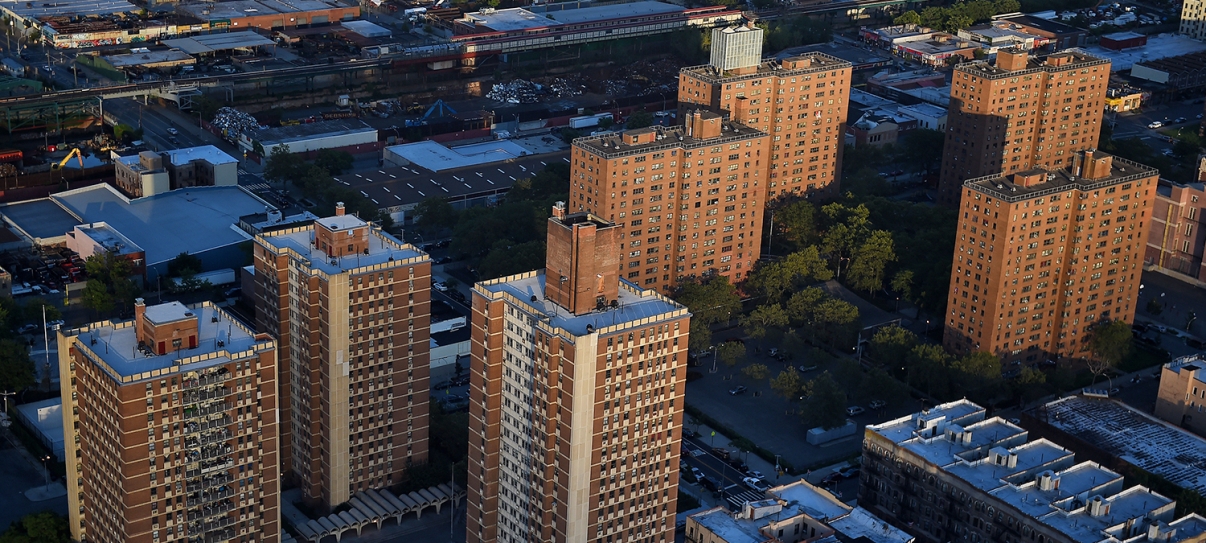
Housing & Land Use
New York City faces what may be the worst housing affordability crisis in its history. New Yorkers feel this crisis every day, whether they are struggling to pay rent, looking for a new home for a growing family, or saying goodbye to a loved one leaving the city. How New York responds to this crisis will determine what kind of city New York will be—and who it will be for.
One of the core causes of this spiraling housing crisis is a lack of housing production. In recent decades, New York has built far less housing than is needed to keep up with demand to live in the city, driving gentrification, displacement, segregation, and tenant harassment. At the same time, while some neighborhoods have seen transformative levels of growth, others have added scarcely any new housing. From 2014 to 2024, just 12 Community Districts added as much housing as the other 47 combined. That uneven production helps explain why, despite the City’s commitment to fair housing, integration, and anti-discrimination policies, the New York metropolitan area remains among the most racially segregated in the country.
Addressing the housing crisis requires a range of reforms: changes to tax policy, voucher support, public subsidy, investment in public housing, tenant protections, building codes, transportation infrastructure, and more. Many of these changes are not within the City’s control. But zoning, which regulates what can legally be built, is among the most important drivers of limited housing production, is within the City’s power to change, and is closely linked to the City Charter. Beginning in the 1960s and in the decades since, New York City has implemented an increasingly restrictive set of zoning regulations that have reduced housing production and reinforced inequitable patterns of production. If the City is going to build the housing it needs, housing that is affordable and accessible, then many zoning rules must change—and the City Charter directly lays out the process by which these changes can be made.
Most land use changes are governed by the Charter’s Uniform Land Use Review Procedure, or ULURP. ULURP includes advisory recommendations from the relevant Community Boards and Borough Presidents, followed by binding votes by the City Planning Commission, and if approved, the City Council. The Mayor can veto a City Council approval, and the City Council can in turn override that veto with a 2/3rds vote. On top of that Charter-mandated procedure is a defining feature of our City’s land use process that is nowhere in the Charter: a practice known as “member deference” in which the entire City Council defers to the local councilmember on land use proposals within that district. At the time of writing, no housing proposal has been approved through ULURP without the support of the local councilmember in 16 years.
The Commission has heard considerable testimony suggesting tweaks and changes to ULURP. That the Commission has not heard significant testimony suggesting that ULURP be replaced wholesale is a testament to its enduring success over the last 50 years. The process has managed to incorporate meaningful public input from a variety of stakeholders, while clarifying and standardizing the application process and review timeline for land use changes. Nevertheless, 50 years of experience with ULURP have revealed certain unintended effects that impede the City’s ability to solve the housing crisis.
For one, the length, cost, and uncertainty of proceeding through ULURP means it almost never enables small changes. Because ULURP is one-size-fits-all, applying the same procedures to massive projects and modest ones, only large proposals—which will bring in enough revenue to justify years of costs prior to approval—are ever put forward. For another, because the local councilmember functionally has the final say on a project, proposals for land use changes are vanishingly rare in the districts of councilmembers who are known to be opposed to additional housing, irrespective of citywide need. And the process particularly limits the City’s ability to activate City-owned land for affordable housing, delaying badly needed projects and raising costs of construction.
Suggestions for how to address the housing crisis through Charter reform fall roughly into three categories: reducing “process costs” for land use changes or City-aided projects; elevating citywide needs and perspectives in decision-making processes; and better leveraging public land. None of the proposals would by themselves allow development. Instead, proposed reforms would change the process by which the City decides whether to permit land use changes. Similarly, no proposal would alter environmental review, building and construction standards, or protections for historic districts or landmarks.
Reducing Process Costs
Decades of experience show that ULURP does not work for modest housing projects. Of 120 residential rezonings proposed by private applicants over the last ten years, just one increased residential capacity by less than 40% and only two increased housing capacity in low-density areas without significant jumps to medium- or high-density districts. Because ULURP functionally requires significant costs and years of work before construction can even begin, it is only rational to go through that process for large projects that will bring in enough return to make up those costs. The Commission may explore reforms to enable modest zoning changes, which are virtually never proposed let alone approved under today’s system, as well as ways to streamline review of categorically beneficial projects, like 100% affordable housing. Approaches to accomplish this goal could include a “fast track” land use review process for certain kinds of projects, a “zoning administrator” office with the power to review certain defined categories of applications, or other smaller adjustments to streamline ULURP consistent with local input and democratic accountability.
Elevating Citywide Needs
The Commission has heard considerable testimony arguing that the underproduction of housing, and the uneven nature of that production, is largely due to an institutional structure that gives parochial interests greater weight than citywide needs. In turn, the Commission has heard proposals to elevate the role of boroughwide and citywide perspectives. Suggestions include amending the Charter to require more comprehensive approaches to planning, as well as to enhance the role of officials like Borough Presidents and the Speaker of the City Council in the land use process.
Leveraging Public Land
The Charter’s current procedure places particular limits on City government’s ability to activate City-owned land, including process mandates that are arguably duplicative or unnecessary. At the same time, ULURP’s “one-size-fits-all” procedure forces the City to spend scarce time and resources on exceedingly modest changes: like the sale of City properties that are mere inches wide, or the acquisition of small properties as part of redevelopment. The Commission may explore ways to streamline review for actions that activate public land and develop income-restricted affordable housing.
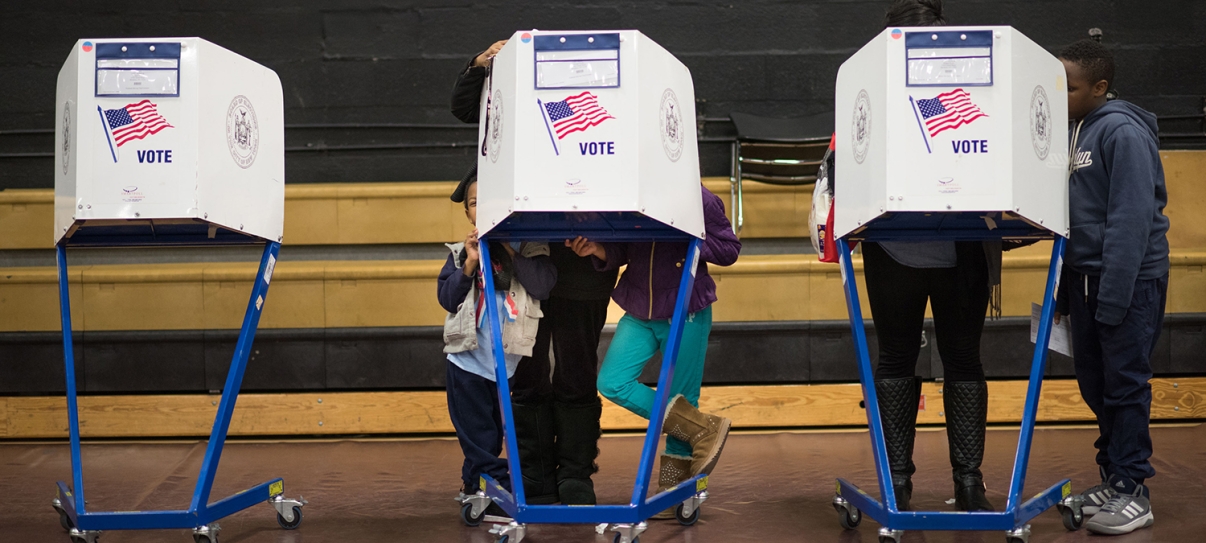
Elections and Voter Turnout
Despite a vibrant civic life, New York City sees abysmal voter turnout in local elections. In 2021, just 23% of NYC registered voters participated in the general election, and some elections see even lower turnout. This problem is decades in the making: although turnout levels were consistently above 50% throughout the 1970s and 1980s, turnout has been below 30% in every mayoral election since 2009. Turnout is especially low among young people and in communities of color—illustrating that the New York City voting electorate does not fully represent the breadth and diversity of its people. There is wide recognition of this problem: at the time of publication, the Commission has received more written testimony calling for election reform than any other subject.
Any reform that the Commission pursues would build on a growing interest in improving voter participation. In 2019, New York State combined state and federal primaries, and in 2022, it shortened voter registration deadlines prior to elections. In 2023, New York State passed a number of measures to increase absentee or mail-in voting access, streamline early voting, and improve electoral education efforts and poll worker training. Though it would not change elections in New York City, the State also recently passed legislation moving town and village elections to even years in order to improve voter turnout.
In 2019, New York City voters approved the implementation of ranked choice voting (RCV) with the aims of saving time and money by avoiding run-off elections, and incentivizing candidates to broaden their bases of support. Early results are promising: the 2021 mayoral primary elections saw the highest turnout of mayoral primaries in decades, with the vast majority of voters ranking multiple candidates. Given these encouraging results, any potential election reforms should preserve ranked choice voting and build on its success.
Even-Year Elections
Local elections in New York City are generally held on odd-numbered years, rather than even years when statewide or federal elections are held. Even-year elections in New York see significantly higher turnout than odd-year elections—more than double, on average—and peer cities see significantly higher turnout in local elections held in even years. Indeed, other cities that have synchronized their local elections with the presidential election calendar have seen skyrocketing voter turnout. For that reason, the Commission has heard considerable testimony—including from the Brennan Center, Common Cause, and Citizens Union—calling for the City to move its local elections to even-numbered years.
In addition to increasing voter engagement, proponents of even-year elections argue that the shift would save taxpayer dollars. Consolidated elections save administrative time and public funds that can be reallocated to voter communication and outreach efforts. In New York City, an estimate by the Independent Budget Office suggests that the savings would total approximately $42 million every two years.
Importantly, a shift to even-year elections is not entirely within the City’s control: it would require changes to both the City Charter and the State Constitution. The State Municipal Home Rule Law establishes that changes to terms of office must occur by local referendum approved by voters—which this Commission could put on the ballot—and the New York State Constitution requires that all city officers be elected in odd-numbered years. A Charter amendment could remove local-law rules requiring odd-year elections and establish new rules to govern even-year elections, which would come into effect should the State Constitution give New York City the power to move to even-year elections. In 2024, a statewide constitutional amendment that would give New York City the option to move its local elections to even-years passed the State Senate, but that state constitutional amendment would still require an additional citywide referendum approved by New York City to opt in and make the change.
Should the Commission explore this change, it may consider how the need for parallel State-level changes impacts a potential city referendum. It may consider whether the appropriate even-year cycle would be a presidential year or gubernatorial cycle. And it may consider how to manage any potential transition, given the necessary one-time disruption to elected officials’ terms.
Open Primaries
Another source of low participation in local elections may lie in the structure of our elections. New York City currently uses a “closed primary” system, in which voters must be registered with a specific party to vote in that party’s primary. As a result, more than 1 million unaffiliated voters are excluded from voting in primaries.
Jurisdictions across the United States conduct elections differently. In many states, party affiliation does not limit voters’ choices in primary elections. In some states, voters can choose which party’s primary to vote in without being registered as members of that party. Still others use “top-two,” “top-four,” or “jungle” primary election systems, which refer to primary elections in which candidates from all parties are listed on a single ballot.
The question of whether to reform New York City’s closed primary system has been considered by prior Charter Revision Commissions. The 2003 Charter Revision Commission proposed a “top-two” system with party labels; voters chose not to adopt this change. The 2010 Charter Revision Commission again examined this type of reform—noting that the number of unaffiliated voters had grown and the landscape of support had changed—but ultimately did not propose any changes to the primary system. In 2024, the Charter Revision Commission again considered these questions, but deferred action to a future Commission.
This Commission has heard a number of proposals for open primary reforms. One proposal, made by Citizens Union, would establish an all candidate, all voter open primary using ranked choice voting, followed by a top-two general election. Many other models are available and may also be considered, including Alaska’s top-four system, which uses ranked choice voting in the general election. Any permutation can maintain and build upon the success of ranked choice voting, as well as preserve party identification on the ballot, given the important role that party identification plays in political life.
In examining any open primary reform, the Commission may consider a number of issues. It may be too soon after the implementation of RCV to enact another significant electoral reform. Open primaries have been shown to increase electoral competition and encourage candidates to appeal to a broad cross-section of voters, but opponents of open primaries argue that political parties should maintain greater influence over how party nominees are selected, and that changing the existing system would weaken parties’ civic engagement and voter-education roles. And crucially, the Commission must carefully consider the impact of any proposed change on minority and marginalized communities.
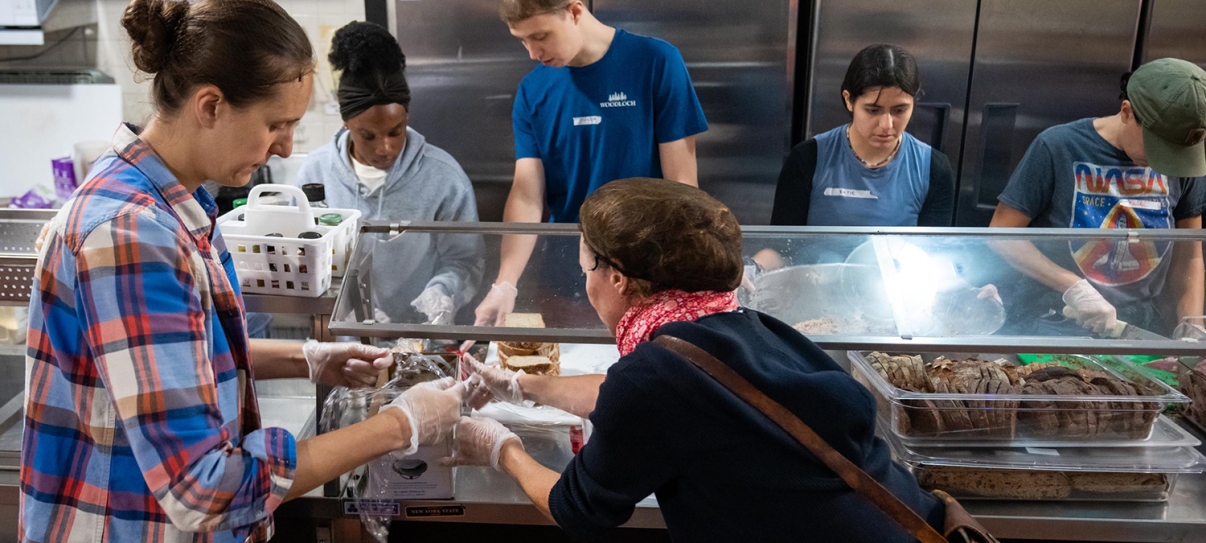
Procurement & Payments
The City contracts with a variety of outside organizations to provide essential services to New Yorkers. From afterschool programs and childcare centers, to shelters and supportive housing, many of the most critical services that New Yorkers depend on are delivered by nonprofits that rely on City funding. Unfortunately, the City is frequently late in paying these vital partners for the work that they perform—putting both these services and the organizations themselves at risk.
This issue is not new. As far back as 1989, City and State commissions identified payment delays and proposed solutions, including the creation of the Procurement Policy Board (PBB) by the 1989 Charter Revision Commission. Today, the Commission has heard testimony that has identified on-time registration and problems with PASSPort, the city’s digital procurement platform, as major culprits in these payment delays. Other factors, which are not necessarily within the purview of the City Charter or this Commission, are likely also responsible for payment issues.
There are a number of City bodies that play a role in efforts to promote timely payment: the Procurement Policy Board, which issues rules governing the contracting process, including soliciting bids and administering contracts; the Mayor’s Office of Contract Services (MOCS), which is responsible for overall oversight and facilitation of all city contracts across other agencies; the Mayor’s Office of Nonprofit Services (MONS), which was created in 2023 and acts as a liaison to nonprofits on city policies and opportunities; and the City Comptroller’s Office, which is responsible for the registration of contracts.
The Adams Administration has taken a number of steps to clear the backlog of late payments and otherwise help impacted nonprofits. These include “backlog” initiatives that have cleared billions in outstanding payments; the creation of the Mayor’s Office of Nonprofit Services; and Executive Order 47 of 2025, which mandates the development of a contract registration and payment dashboard and requires certain agencies to designate a Chief Nonprofit Officer. To assist nonprofit providers facing urgent cash flow issues, the City also manages the Returnable Grant Fund, which offers no- or low-interest loans to nonprofits waiting for contract registration, and facilitates contract advances of up to 25% for Health and Human Services (HHS) providers.
Nevertheless, chronic late payment issues persist. To date, the Commission has heard several proposals for reform to help address these issues.
Elevating and Empowering MOCS
The Mayor’s Office of Contract Services currently exists by executive order. The Commission has heard testimony suggesting that it be incorporated into the City Charter and empowered to standardize agency invoicing and payment processes, as well as establish timeframes for contract processing and compliance.
Contract Advances, Partial Payment, and Interest for Late Payment
The Commission has heard testimony suggesting reforms that would require advances on some categories of contracts, or partial payment of invoices from contractors in good standing. The Commission also heard testimony suggesting that existing rules regarding interest payments on late payments by city agencies be strengthened to incentivize prompt payment.
PPB Reform
The Commission has heard testimony suggesting reforms to ensure that the Procurement Policy Board is required to meet more frequently or consistently, as well as reforms to promote transparency in PPB proceedings or to alter the membership of that appointive body.
Discretionary Contracts
he Commission also heard testimony suggesting that discretionary contracts represent a growing bottleneck for some agencies, even as they represent a small share of the total value of all contracts. Some suggest reforms that would enable discretionary contracts to be treated as grants, which could help enable faster payments to nonprofits and clear backlogs that impact non-discretionary contracts. Here as elsewhere, the Commission may balance the benefit of faster payment with the need to safeguard taxpayer funds and ensure vendor performance.
Additional Methods to Streamline Contracting
Finally, the Commission heard testimony suggesting that reforms to streamline contract renewal for contractors in good standing, as well as to facilitate the use of master contracts for pre-qualified vendors, can promote timely registration and payment.
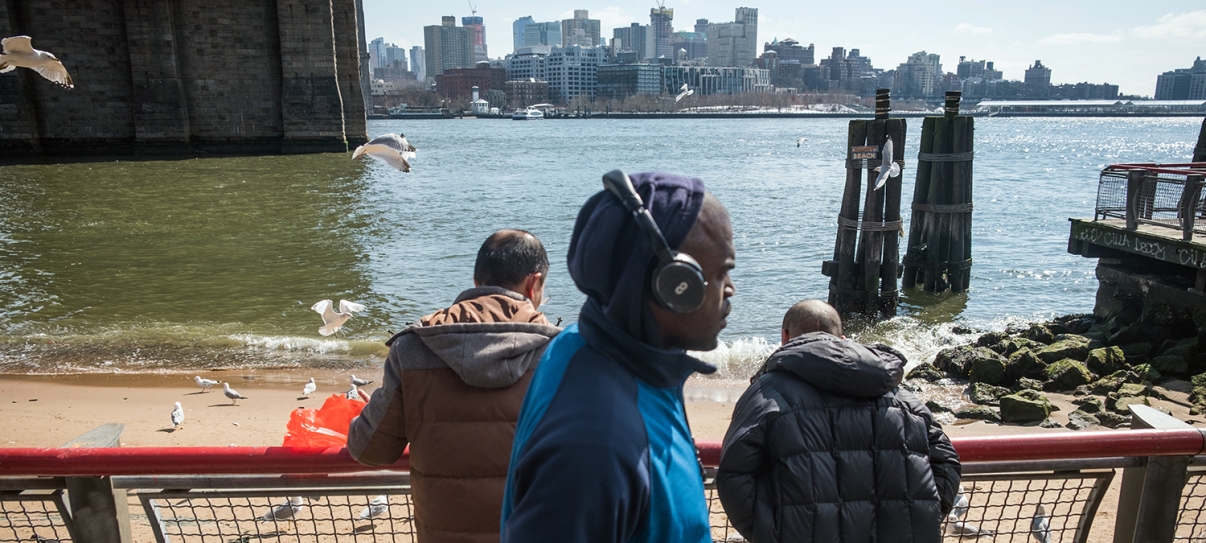
Climate & Infrastructure
The climate crisis is already affecting New York City, and its impact grows each day, from sea level rise and flooding events to extreme heat. The City has taken important steps to address this crisis and soften its impacts, but more must be done.
The Charter received its last major update overhaul in 1989—just one year after NASA scientist James Hansen first testified to the U.S. Senate about the existence of a “greenhouse effect.” It should be no surprise, then, that the Charter may not have been designed to address the climate emergency with the urgency it requires. Though major infrastructure and resiliency projects can naturally take a long time to plan and execute, some processes in the City Charter have unnecessarily slowed these vital improvements.
The Commission has heard wide-ranging testimony about ways that the Charter can be reformed to facilitate faster, more cost-effective resiliency and infrastructure projects. As in the case of small housing proposals (described above), testimony has pointed out that existing Charter process can be a procedural barrier to important climate-related City actions, including street grade raisings and voluntary flood buyouts. The Commission has also heard that outdated provisions of the Charter may impair the City’s ability to build electric vehicle charging infrastructure at scale.
Promoting Resiliency on Public Streets
One of the simplest ways to prevent coastal flooding is to raise the grade of a street or otherwise improve waterfront land. Today, however, these measures frequently require lengthy public review in a process that is a poor fit for the types of changes required. Many waterfront projects surface decades-old inaccuracies in the City Map—but any change to the City Map triggers ULURP, adding significant extra process to necessary projects. Similarly, today raising an existing road by just a few feet will trigger lengthy public review, adding months or years and significant costs to a basic resiliency measure.
Voluntary Buyout Programs
Today, the Charter requires a full ULURP when the City acquires almost any property, even if the City is seeking to buy out single-family homeowners of properties vulnerable to flooding. The result is a process that makes buyouts unpalatable or simply impossible for many who might like to move out of harm’s way.
Electric Vehicle Infrastructure
The Commission also heard testimony suggesting that outdated provisions of the Charter, such as those related to so-called revocable consents, make it difficult to build public curbside electrical vehicle charging infrastructure at scale, leaving far too many New Yorkers dependent on vehicles that run on fossil fuels. Relatedly, the Commission heard testimony suggesting that general rules around revocable consents and franchises can be reformed to promote efficiency and greater transparency.
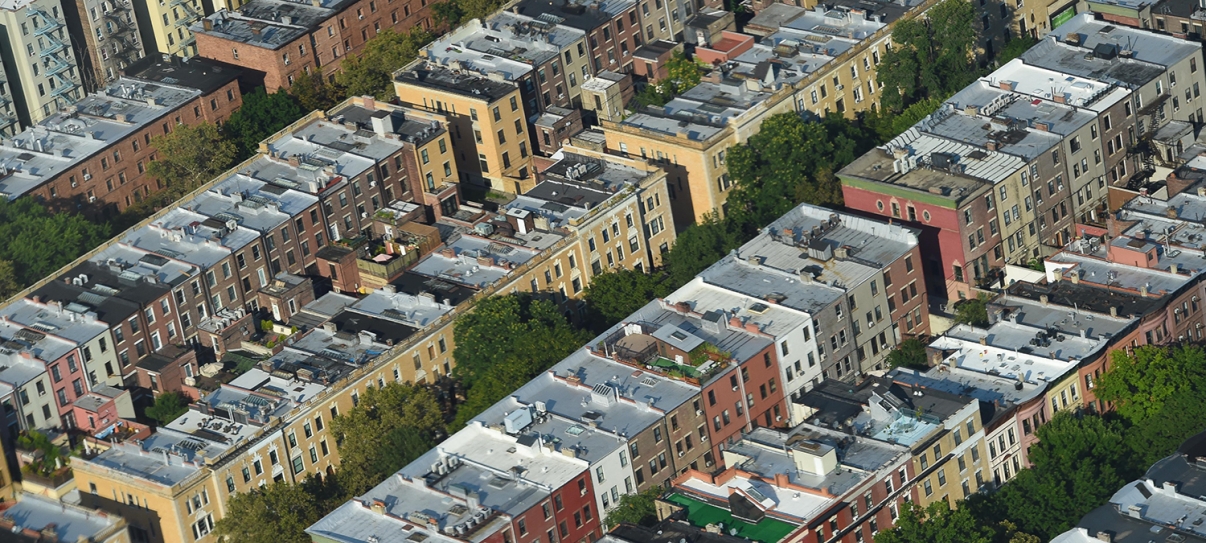
City Map
The City Map, the official street map of the City of New York, is a crucial tool in the city’s ability to create housing, deploy infrastructure, and address many of the city’s other challenges not outlined in the chapters above. However, in the century following municipal consolidation in 1898, a unified City Map of all five boroughs was never adopted, so today the City Map consists of five different sets of maps, one for each borough, totaling over 8,000 individual paper maps. The administration of the City Map is decentralized and archaic, and though many map-related processes exist outside of the City Charter, the Commission has heard testimony about ways the Charter could be amended to modernize this critical function.
Alterations
The Charter assigns review and approval of any alterations of the City Map to the affected Borough President and the Borough Engineer employed by that Borough President’s Topographical Office. This function has become increasingly difficult to staff and sustain in Borough President offices as Borough Presidents’ other responsibilities have changed since the 1960s—resulting in significant and unpredictable delays for ministerial and otherwise relatively minor changes.
Confirmations
A wide variety of housing and infrastructure project require the manual confirmation of the location, width, and legal grade of mapped streets. Similar to the alteration function, this process—largely unchanged for decades—can add significant delays to any project that requires City Map confirmation before the Department of Buildings can issue permits.
Address Assignment
The function of tracking the unique addresses of properties is the backbone of many of the City’s permitting and property information systems. These systems are critical in the City’s administration of construction permitting, property tax assessment, and emergency services. However, after a City Map change, Borough President Topographical Offices are responsible for address assignment, and those offices’ practices are fragmented and inconsistent, adding another source of potential delay to housing and infrastructure projects.
The Commission may explore ways that City Map administration and related functions can be centralized and modernized, and whether there is a Charter role in digitizing the City Map.
For questions or more information, please contact the Charter Revision Commission.
